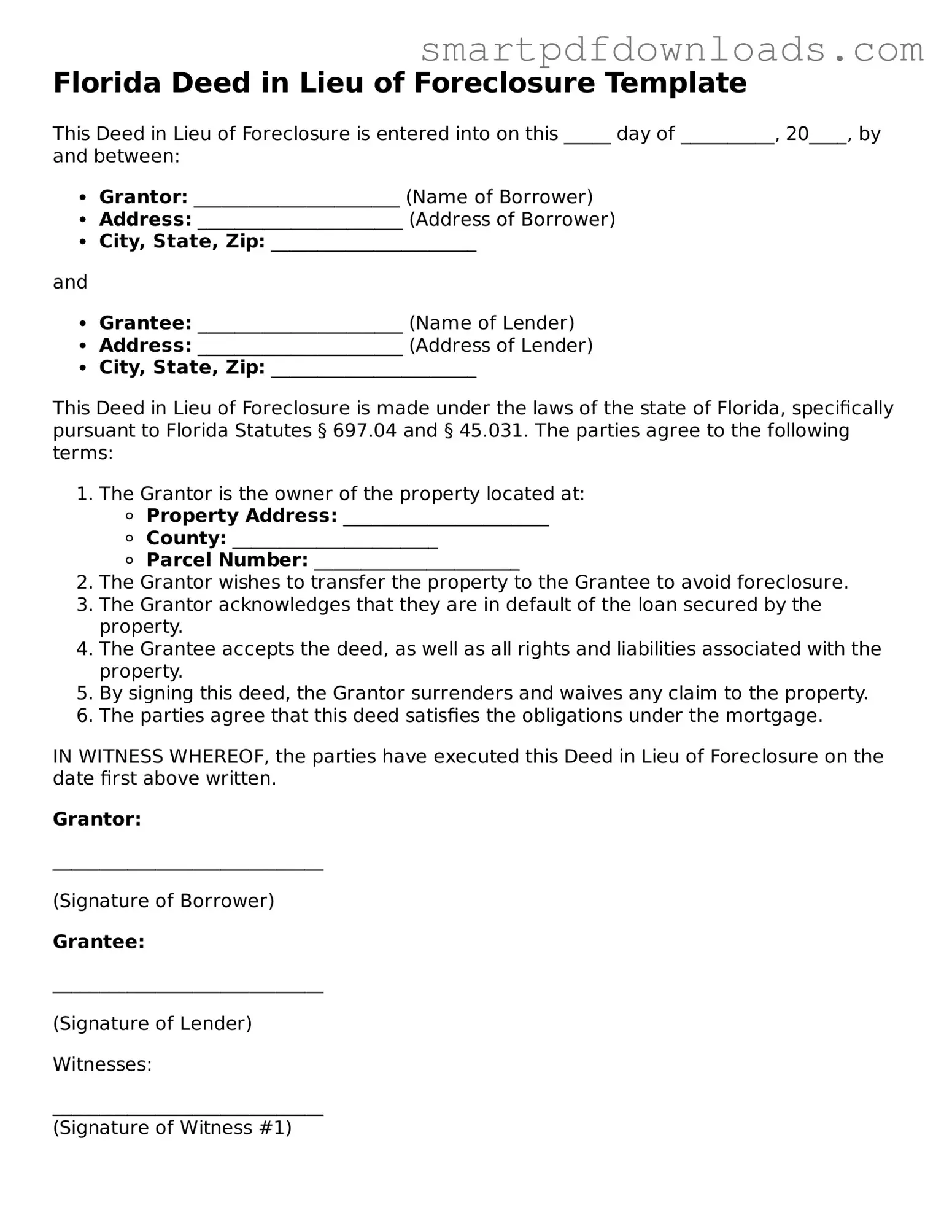Florida Deed in Lieu of Foreclosure Template
This Deed in Lieu of Foreclosure is entered into on this _____ day of __________, 20____, by and between:
- Grantor: ______________________ (Name of Borrower)
- Address: ______________________ (Address of Borrower)
- City, State, Zip: ______________________
and
- Grantee: ______________________ (Name of Lender)
- Address: ______________________ (Address of Lender)
- City, State, Zip: ______________________
This Deed in Lieu of Foreclosure is made under the laws of the state of Florida, specifically pursuant to Florida Statutes § 697.04 and § 45.031. The parties agree to the following terms:
- The Grantor is the owner of the property located at:
- Property Address: ______________________
- County: ______________________
- Parcel Number: ______________________
- The Grantor wishes to transfer the property to the Grantee to avoid foreclosure.
- The Grantor acknowledges that they are in default of the loan secured by the property.
- The Grantee accepts the deed, as well as all rights and liabilities associated with the property.
- By signing this deed, the Grantor surrenders and waives any claim to the property.
- The parties agree that this deed satisfies the obligations under the mortgage.
IN WITNESS WHEREOF, the parties have executed this Deed in Lieu of Foreclosure on the date first above written.
Grantor:
_____________________________
(Signature of Borrower)
Grantee:
_____________________________
(Signature of Lender)
Witnesses:
_____________________________
(Signature of Witness #1)
_____________________________
(Signature of Witness #2)
State of Florida
County of _________________
Before me, a notary public, personally appeared __________________________ (Name of Grantor), who is known to me or has produced identification, and who acknowledged that he/she executed the foregoing instrument for the purposes therein contained.
Witness my hand and official seal this _____ day of __________, 20____.
_____________________________
Notary Public
My commission expires: ________________
